
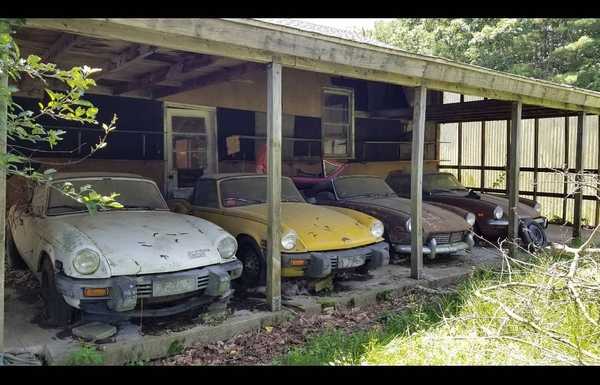
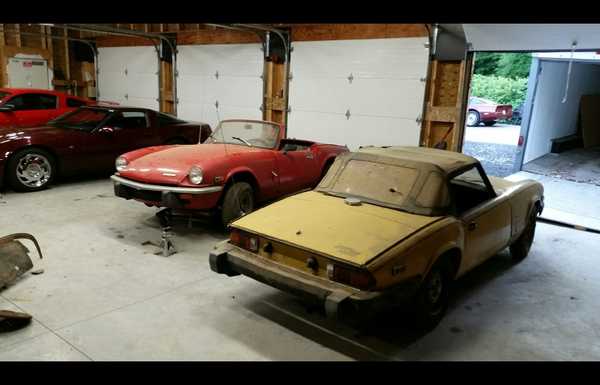

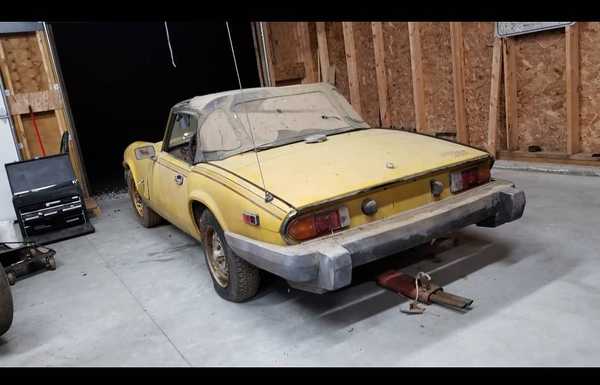

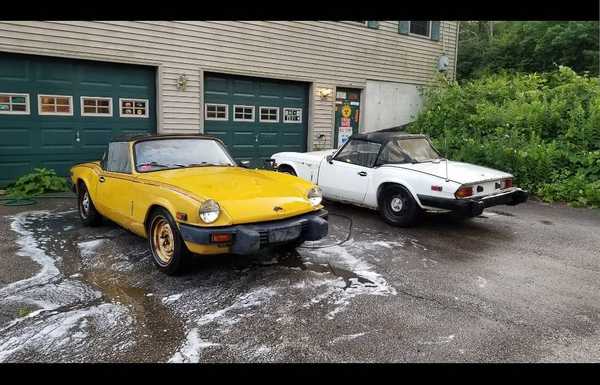
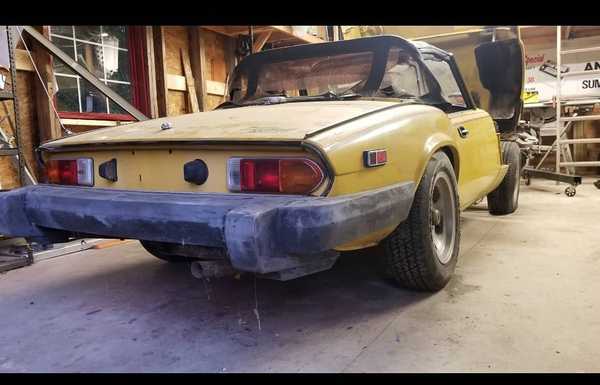
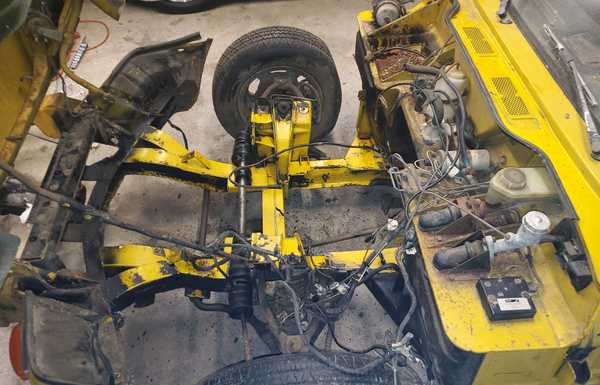
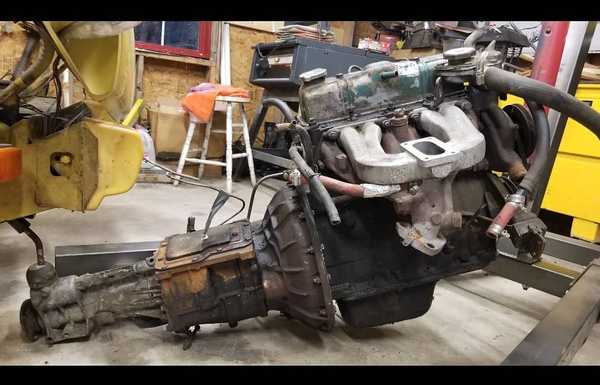
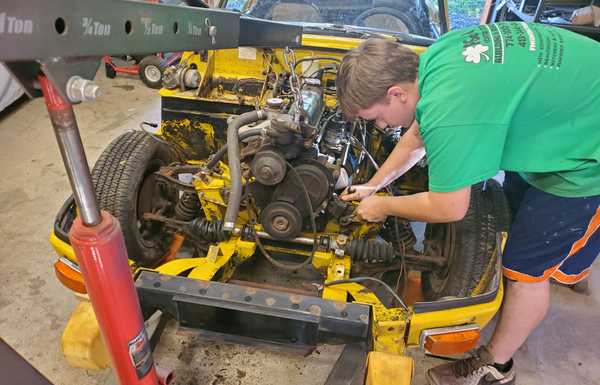
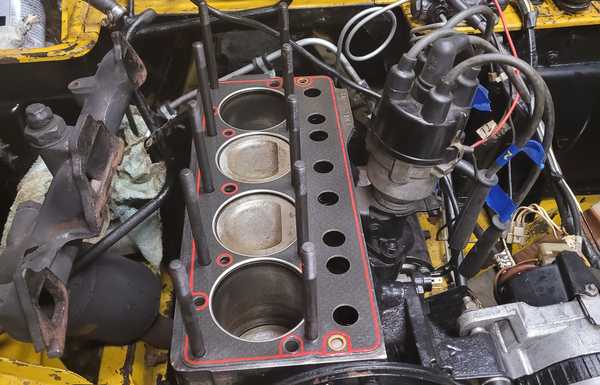

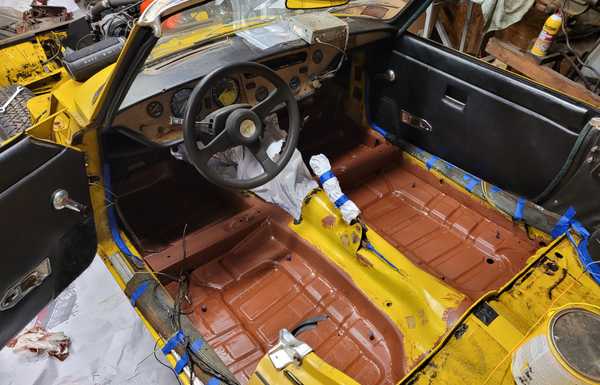
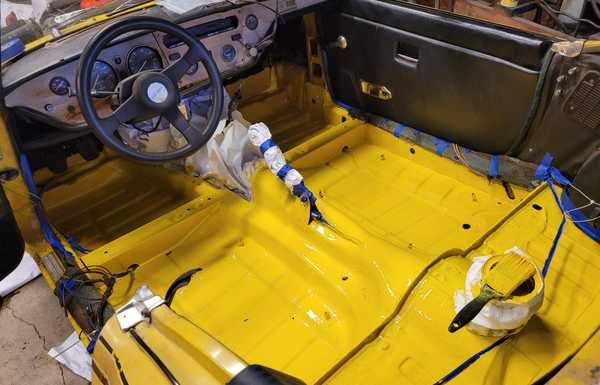
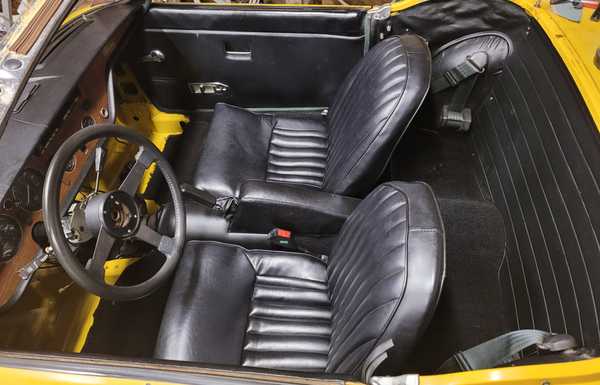
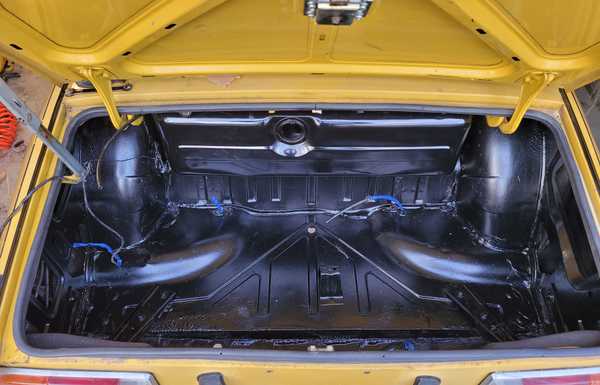
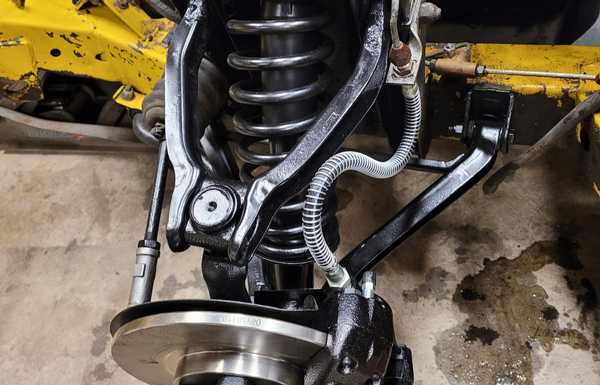
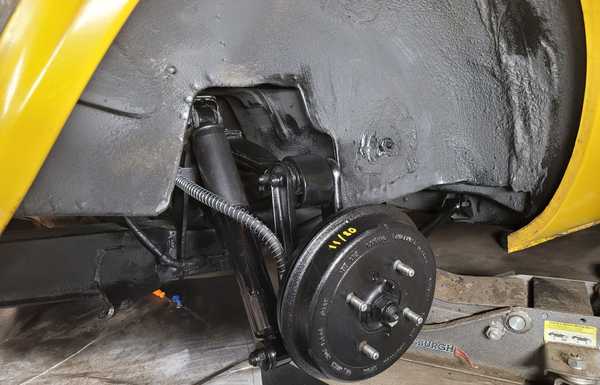
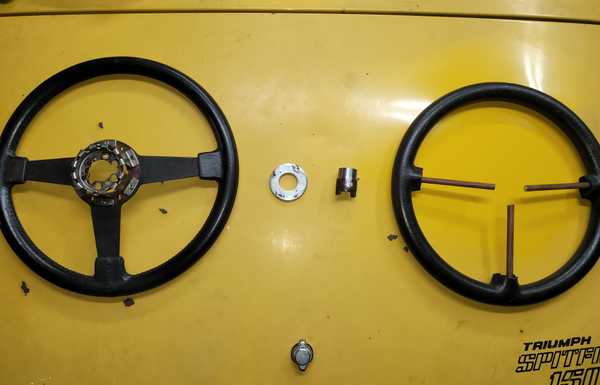
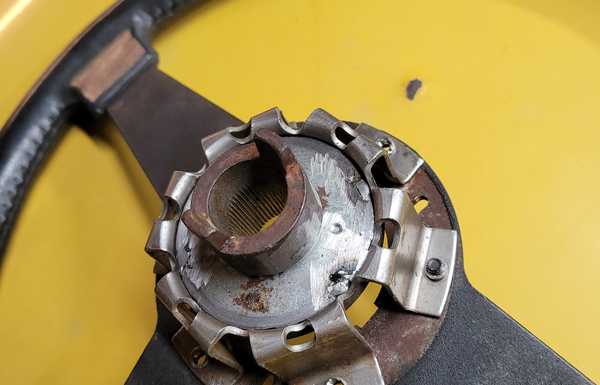
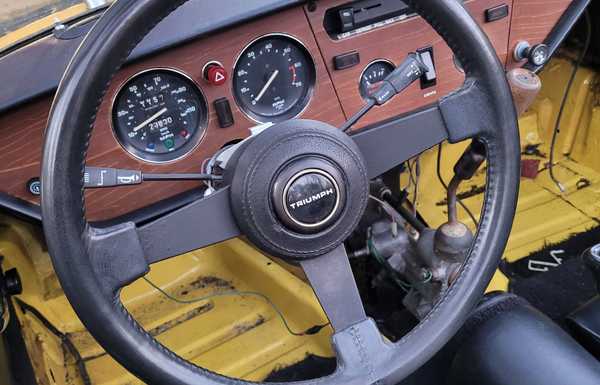

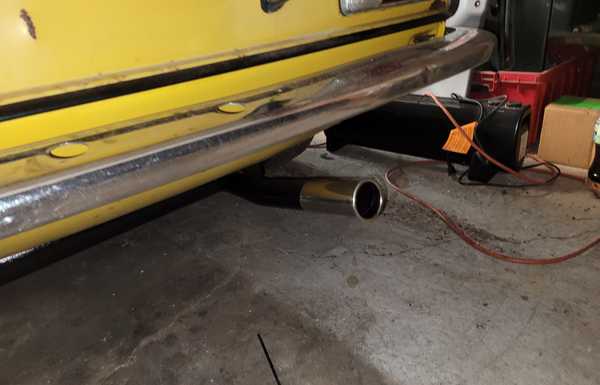


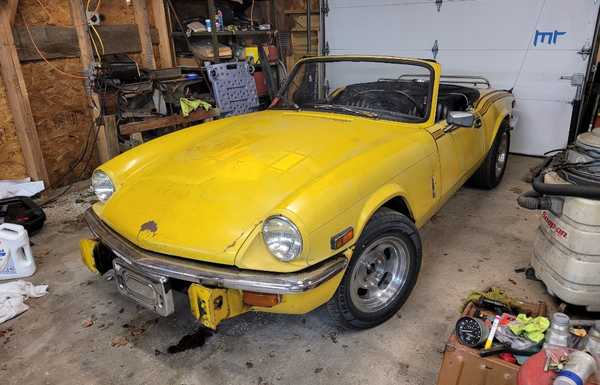

Mods
Ansen Slot Mags, Jaguar XJ6 Exhaust Tip, Pontiac Fiero Steering Wheel, Luggage Rack, Low Back Bucket Seats, Mark IV Chrome Bumpers
Build story
Joe Leaming here,
The story of this car goes like many others. It was part of an older man’s extensive collection of spitfires that were left abandoned when he passed away, his children uninterested. The owner who bought this old man’s property was not willing to put any time in selling each car separate and either was going to sell all 12 of them in one deal or bring them all to the scrapyard. My father, brother, and I decided to buy the lot of Spitfires not knowing a thing about them, but feeling sympathy for what may come of them if we didn’t make the move. Let’s narrow our attention to the Inca Yellow Spitfire that is my entry into this car show. This was the car that caught my attention out of the group mostly because of the bright yellow paint and the really retro custom stripe that really sets of the lines of the car and on further inspection had zero rust. (extremely rare for New England) . I took ownership of it and set off to get it into decent driving condition. Though the motor had 23,000 original miles it was seized solid from sitting since 1989, so I sourced an engine that turned over from a pull-a-part yard (knew nothing of the condition of it). Upon installation, I performed a compression test and it read a nice 120 psi on all four (lucked out there). I was then motivated to replace the entirety of the brakes, suspension, and fuel system, which was surprisingly pretty cheap to do and easy for a DIY mechanic like myself. I robbed a manual choke Stromberg carburetor from one of the other spitfires and gave it a crank, surprisingly it fired up, running horribly, but running for the first time in 30 years. With it mechanically workable, somewhat, I worked on the cosmetics, pulling the engine back out to paint it, painting all the floors which needed zero rust repair. I really wanted to take away the later 70s big bumper look and robbed the chrome bumpers off a 1971 spitfire that really had no other destination other than being a flower planter. I robbed the low back buckets out of a 76 Spitfire to give it an older MK3 look and grabbed some original Ansen Slot Mags from a 69 MK3 that looked like it had just driven back from Woodstock. The outside was looking decent, as well as the engine bay, but the interior still looked dingy. A 1980 Spitfire had a nearly perfect wood dash bezel and dash pad which helped to tie up the interior. It was still missing a steering wheel though and I didn’t have a one good one out of all the 11 other cars. I did have a mint steering wheel out of an 84 Pontiac Fiero though, which looked similar so that was going to have to work. It required some work to make a Pontiac wheel work in a Triumph, to say the least. It involved cutting out the triumph hub and spending some time with my father working it to the right diameter on the lathe and then spot welding it onto the Fiero hub. In the end though, it looks better than the factory Triumph wheel. After learning everything I wanted to know and didn’t want to know about the impeccable reliability of Stromberg carburetors (sarcasm), I got the car to idle and rev without a shudder and it was time for her maiden voyage. Just kidding, the headgasket let go, a minor setback, but something I should have changed while the engine was out. Once that ordeal was solved I took the Spitfire on the road and realized why people adore these old British sports cars so much. It was one of the most enjoyable quarter mile drives I’ve ever had and I could just tell the car was happy as hell to have averted the crusher to once more putter around a windy country road, giving the driver a big smile.
The story of this car goes like many others. It was part of an older man’s extensive collection of spitfires that were left abandoned when he passed away, his children uninterested. The owner who bought this old man’s property was not willing to put any time in selling each car separate and either was going to sell all 12 of them in one deal or bring them all to the scrapyard. My father, brother, and I decided to buy the lot of Spitfires not knowing a thing about them, but feeling sympathy for what may come of them if we didn’t make the move. Let’s narrow our attention to the Inca Yellow Spitfire that is my entry into this car show. This was the car that caught my attention out of the group mostly because of the bright yellow paint and the really retro custom stripe that really sets of the lines of the car and on further inspection had zero rust. (extremely rare for New England) . I took ownership of it and set off to get it into decent driving condition. Though the motor had 23,000 original miles it was seized solid from sitting since 1989, so I sourced an engine that turned over from a pull-a-part yard (knew nothing of the condition of it). Upon installation, I performed a compression test and it read a nice 120 psi on all four (lucked out there). I was then motivated to replace the entirety of the brakes, suspension, and fuel system, which was surprisingly pretty cheap to do and easy for a DIY mechanic like myself. I robbed a manual choke Stromberg carburetor from one of the other spitfires and gave it a crank, surprisingly it fired up, running horribly, but running for the first time in 30 years. With it mechanically workable, somewhat, I worked on the cosmetics, pulling the engine back out to paint it, painting all the floors which needed zero rust repair. I really wanted to take away the later 70s big bumper look and robbed the chrome bumpers off a 1971 spitfire that really had no other destination other than being a flower planter. I robbed the low back buckets out of a 76 Spitfire to give it an older MK3 look and grabbed some original Ansen Slot Mags from a 69 MK3 that looked like it had just driven back from Woodstock. The outside was looking decent, as well as the engine bay, but the interior still looked dingy. A 1980 Spitfire had a nearly perfect wood dash bezel and dash pad which helped to tie up the interior. It was still missing a steering wheel though and I didn’t have a one good one out of all the 11 other cars. I did have a mint steering wheel out of an 84 Pontiac Fiero though, which looked similar so that was going to have to work. It required some work to make a Pontiac wheel work in a Triumph, to say the least. It involved cutting out the triumph hub and spending some time with my father working it to the right diameter on the lathe and then spot welding it onto the Fiero hub. In the end though, it looks better than the factory Triumph wheel. After learning everything I wanted to know and didn’t want to know about the impeccable reliability of Stromberg carburetors (sarcasm), I got the car to idle and rev without a shudder and it was time for her maiden voyage. Just kidding, the headgasket let go, a minor setback, but something I should have changed while the engine was out. Once that ordeal was solved I took the Spitfire on the road and realized why people adore these old British sports cars so much. It was one of the most enjoyable quarter mile drives I’ve ever had and I could just tell the car was happy as hell to have averted the crusher to once more putter around a windy country road, giving the driver a big smile.